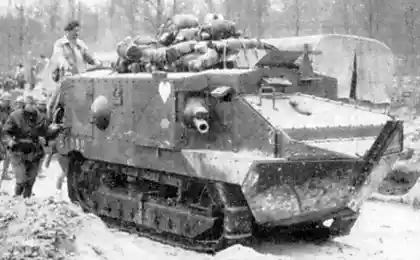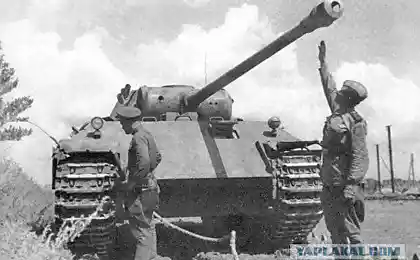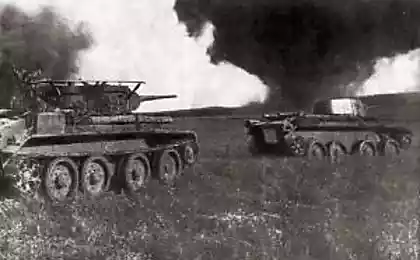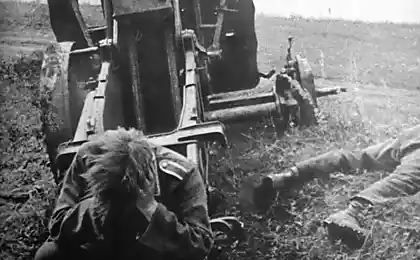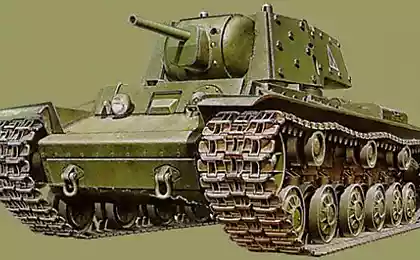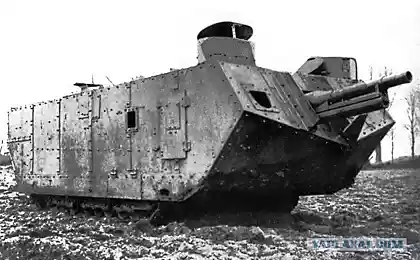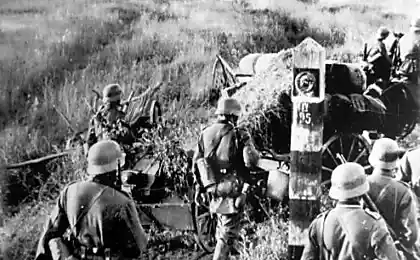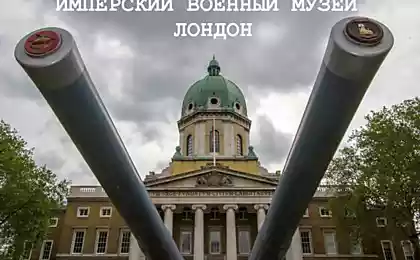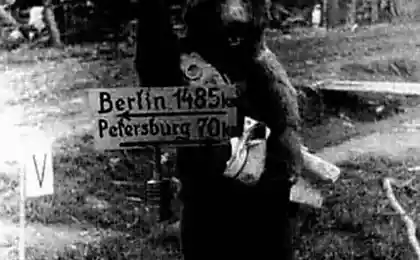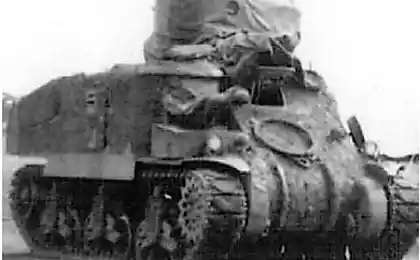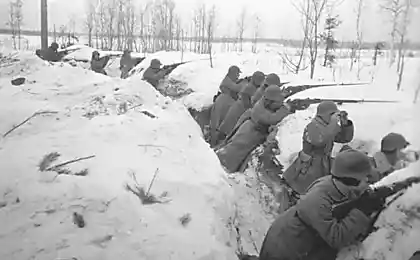906
Soviet tanks, we also sculpted giants
Heavy tank QMS

Heavy tank QMS
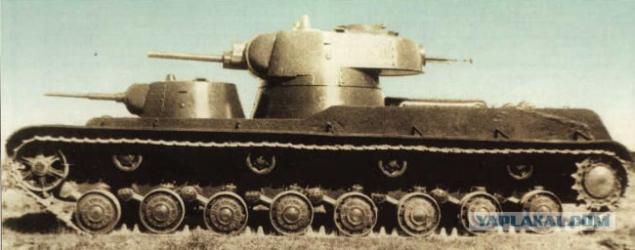
Heavy tank QMS

Heavy tank QMS
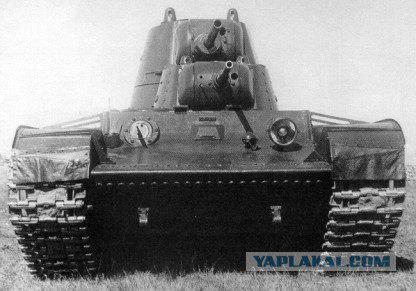
Year
1939
Crew
7
Weight, t
55
Dimensions:
Length
width
Height
8, 75
3, 4
3, 25
Ground clearance, m
0, 5
The width of the shoe, m
0, 7
The armor protection, mm
Forehead body 60-75 mm
The board body 60 mm
Feed 55 mm
The roof is 20 mm
The bottom 30 mm
Armament
76, 2-mm gun L-11
45-mm gun mod. 1934-38 biennium.
12, 7 mm machine gun DK.
3 x 7, 62-mm machine gun DT.
Ammunition
113 shots
300 shots
600 rounds
4920 cartridges
Vertical angles
targeting the top of the tower
-7 °; +35 °
Vertical angles
targeting the lower tower
-7 °; +25 °
Communication
- External relations
- Intercom
71-TK-3
TPU-ba
Transmission
5 forward and 1 reverse
Engine
"AM-34»
12-cylinder, 850 hp
Fuel tank capacity, l
1320
Fuel consumption
Highway 100 km, L
600
Cruising, km
on the highway - 230
on the ground - 160
Max. speed km / h
35, 5
Obstacles:
rise, hail
Bank, hail
moat mm
wall mm
ford, mm
37
30
4000
1100
1700
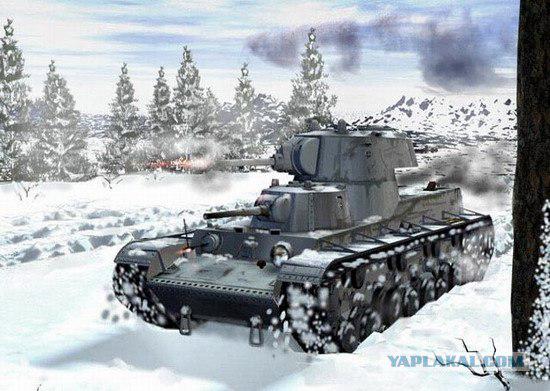
Heavy Tank T-100

Heavy Tank T-100

Heavy Tank T-100
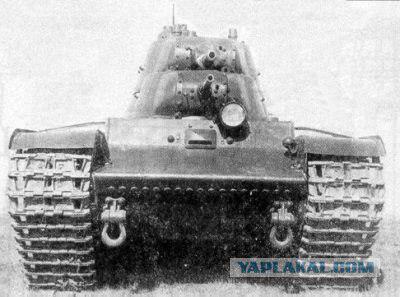
Heavy Tank T-100
Posted in [mergetime] 1240323312 [/ mergetime]
oic weight 58 tons
Crew 7 (8) persons
Dimensions:
full body length 8495 mm
width 3400 mm
height 3430 mm
ground clearance 525 mm
Armament:
Cannon A-10 (A-11), 76, 2 mm mod. 1934-1938 gg.
45 mm mod. 1934
7 DT machine guns, 62-mm
Ammunition:
76, 2-mm shells 20 pcs.
45-mm shells 393 pcs.
cartridges DT 4284 pcs.
The armor protection:
forehead, side and feed the body 60 mm
Tower 60 mm
roof 20 mm
the bottom 20 - 30 mm
Travel speed:
maximum 35 on the highway, 7 km / h
average of 10 lane, 3 km / h
Obstacles:
rise of 42 °
slope 42 °
Roll 25 °
ditch 4m
Vertical wall 1 2 - 1 3 m
ford 1, 25 m
the average ground pressure 0, 68 kg / cm2
Cruising:
160 km on the highway
the lane 120 km
Marine engines, glisserny GAM-34,
Type: V-neck, four-stroke, carburetor
the number of cylinders 12
maximum power at 1850 rev / min 850 hp
fuel capacity 1160 liters
Communication:
radio 71-TK-3
intercom TPU-6
Posted in [mergetime] 1240323375 [/ mergetime]
via bronetehnika.narod.ru/smk/smk.html. armor.kiev.ua/Tanks/BeforeWWII/T100/

After light Soviet tanks T-26 and BT-5 were tested in the fire of the Spanish war, it became clear that almost all the tanks of the Red Army, both light and heavy armor need to be strengthened. Particular attention was paid to the heavy tanks, the creation of which began in 1938 with two factories of Leningrad: at the Kirov factory chief designer ZY Kotin developed QMS (named after the leader of the Leningrad Bolsheviks Sergei Kirov) and at the Leningrad plant experienced mechanical engineering Kirov T-100 created a military engineer of the 1st rank MV Barykova. The work was done on a competitive basis, as the weapons needed to take only one tank. Head of the group of designers was defined QMS AS Ermolaev. In his draft weight of the tank was 55 tons. Therefore, it was decided to put on a 12-cylinder gasoline engine aircraft 850 hp, which was estimated to provide the tank a maximum road speed of 35 km / h and a cruising range of 220 km. < br /> Creating such a heavy tank was a very difficult thing. They were looking for the optimal body shape and towers, the question arose whether to make their cast or welded plates of armor. To visualize how it will look tank Kotin ordered to make its layout from the tree, and after 15 days he was ready. Although the plant has created a protivosnaryadnym armor tank T-46-5, it was obvious that the new tank car unusual. By linking the first version of the QMS, which had three towers is more reminiscent of a cruiser. Thus it is not the tower located along the longitudinal axis of the housing, and with mixing - the front left and rear right. The central tower was above the limit and mounted on an armored conical base. The central tower with a 76-mm gun was rotated 360 degrees. The front tower of the lower tier could be rotated 270 degrees, and the rear - to 290, so "dead zone" fire equaled only 440 sq / m, ie, It was the lowest of all the options considered. Ammunition of the central tower was 150 shots, while the other two were 300 shots. All towers have periscopes for observation and sights. Crew towered machine was to consist of 7 members, which allows simultaneous fire in all directions.
However, until August 1938 without a contract for the manufacture of new machines, factories were mainly schematic design. At full speed the work unfolded only after the decision of the Committee of Defense in SNK N 198ss of 7 August 1938 which sets strict deadlines manufacture of new types of tanks: QMS May 1, 1939, T-100 to June 1, 1939 Within two months, 10 and 11 October, the Commission chaired by the Assistant Chief ABTU military engineer of the 1st rank Korobkova reviewed drawings and wooden models in natyralnuyu value tanks SMK and T-100. Despite a number of deviations from the tactical - technical requirements - in particular, instead of the suspension-type T-35 with coil springs in the QMS used torsion bars, and on the T-100 - balancers with plate springs - prototyping Commission gave "good" for the production of advanced samples of the tanks of the charges and the layout drawings.
QMS superior heavy tank T-35 in the speed of power reserve, terrain, could climb to 40 degrees, while the T-35 the slope of more than 15 was the limit. Initially, (as mentioned above), the tank should have the same suspension system as the T-35, but it was not very reliable and required to protect the bulky and heavy armor screens. That's why early on the design of it was abandoned and used for the first time in the USSR on a heavy tank torsion bar suspension has already been applied in the light of the Swedish and German tanks.
The tank must have had at the time really reliable armor does not break the shells 37 ... 40 mm guns. The hull and turret were made of rolled armor, the maximum thickness at the front and on the sides of 60 mm "roof" of the tank was 20 mm, and the bottom to protect the mine made a thickness of 30 mm. A characteristic feature of the machine with three towers were chamfered corners bow of the hull, which were later used on the tank KV-13 and IS-Series.
December 9, 1938 Tank QMS as a small layout of wood was demonstrated in the Kremlin. While watching Stalin considered excessive rear tower (the same point of view was himself ZY Kotin) and offered to remove it, and saved three tons of weight used to strengthen armor protection. In addition it was allowed to work on options for the future odnobashennym KV tanks. In January 1939 began manufacturing in metal tanks.
QMS two-tower chassis version was simpler forms, and the main tower - the machine gun in the back. Cover and installing anti-aircraft machine-gun DC. Stalin believed that such a tank must be of drinking water in a special tank.
The first trial of leaving the factory yard QMS made April 30 and T-100 - July 1, 1939 after the plant running two cars were handed over to the field tests, which began on the night from July 31 to August 1. September 20, 1939 QMS, T-100 and KB participated in the government show serial and experimental tanks are on the ground in Kubinka. It was attended by Voroshilov, AAZhdanov, NA Voznesensky, Mikoyan, D.G.Pavlov, Likhachev, Malyshev and others. Although the tank QMS withstood the test, it was observed that it is difficult for drivers to conduct heavy machinery and commanders difficult to control the fire two guns and machine guns in two towers. By the end of November 1939 QMS was running 1,700 km. Battle of application
But November 30, 1939 the Soviet-finlyadskaya war. The troops of the Leningrad Military District under the command of the commander of the 2nd rank K.A.Meretskova moved forward, but ran into heavily fortified frontier, powerful sitemu bunkers and other fortifications, the overcoming of which is in a rapidly ensuing harsh winter caused serious difficulties. Learning of this, the management of the Kirov factory launched an initiative designed to apply heavy tanks to break encountered on the way to strengthen the enemy troops. In the area of operations were urgently delivered tanks QMS and HF, there is delivered and experienced two-towered T-100.
Due to the fact that in armor was not yet professionals trained in the management of these machines in the tank crews had to turn the factory test, expressed a desire to voluntarily participate in this dangerous business. Volunteers passed before being sent to the front on tank combat training course at Red countryside.
Model SMK tank on the Soviet-Finnish front
All of them were dressed in military uniforms and issued personal weapons, although they are not formally servicemen were.
SMK tank commander was appointed personnel tanker V.Petin senior lieutenant, Red Army soldiers were also gunner and gunner guns. A driver assigned test V.I.Ignateva but his crew included minder A.P.Kunitsyna and transmissionschika A.G.Tetereva.
The commander of an experienced tank KV also appointed personnel tanker Lieutenant G.F.Kachehina, driver-mechanic-military technician grade 2 I.P.Golovacheva, a test driver - factory K.I.Kovsha specialist, mechanic - A.I.Estratova except them The crew consisted of the Red Army - the gunner and radio operator Kuznetsov Smirnov.
Thus, the two Kirov prototypes with boys - professionals were five factory volunteers. The senior team of experienced tanks, which included also experienced two-towered heavy tank T-100, was appointed military engineer 2 rank I.I.Kolotushkina.
At dawn on a frosty winter day Kirov tanks were unloaded from trains and subordinate to the 20th Tank Brigade Brigade Commander S.V.Borzunova. Any further movement of tanks performed by experienced its course.
To test the fighting qualities of new machines have chosen a rather difficult section of the front. To him the tanks were put forward by Terijoki (now Zelenogorsk), then passed Raivola and reached the area Boboshin, not far from the station Perkiyarvi (now Kirillovskoye). Front line of the enemy were held between the lake and ice-marsh Summayarvi Sunasuo. Finnish pillboxes on the skyscrapers were armed with 37 mm guns Swedish "Bofors" and machine guns. Before them stood the granite anti-tank obstacles. Heavy tanks were to attack these fortifications and seize the heights that served observation posts.
At the turn of the original tank crews visited the head of the Red Army Corps Commander Armor Management D.G.Pavlov, were with him director of the Kirov Plant I.M.Zaltsman and Chief Designer Zh.Ya.Kotin For actions experienced tanks remote command center watched the commander of the North-Western Front Commander 1st Rank SK Timoshenko, commander of the Leningrad Military District Commander 2nd Rank K.A.Meretskov and head trials son Commissar of Defense P.K.Voroshilov.
Artillery training was conducted in such a way that not only suppress enemy defenses, but break through the passages in the barbed wire. With the latest volleys of guns sounded the command "Forward!". Tank QMS moved to the head of the column advanced machines. His commander, senior lieutenant V.Petin was the eldest of the group. Mighty tank, pushing the debris, went ahead. There he broke the fence wire fence, crossed the ditch and came to the granite post obstacles. The Finns were shooting at him from anti-tank guns in the car was a terrible roar of the strikes on armor, but not a single crew did not detect the holes. From the tower guns fired at the tankers embrasures Finnish pillboxes as long as the team did not get back to the starting position.
The next day, the attack was repeated twice. And both times experienced car without serious injury returned to their original positions. But then I received orders to support our troops broke into the area of Sumy. All prototypes lined up in a column, a tank in front of the QMS, and moved forward. On the way one of the hits jammed the main tower. The tank had already stepped into the road. At the fork Kyameri-Vyborg driver noticed a pile of boxes and apparently ran over them. There was a loud explosion, SMC stopped. Senior lieutenant Petin out of the car and saw that the explosion damaged the sloth and a caterpillar. In addition, ripped transmission bolts and bottom of the tank caved
Posted in [mergetime] 1240323693 [/ mergetime]
Evacuation group tried to pull the damaged tank, using a 25-ton tractor T-28. However, to pull the 55-ton whopper entrenched in the funnel, we could not. I had to leave it in place to undermine the neutral zone. There is evidence that the Finns tried to tow the SMK tank, but they did not succeed. For a long time the tank was used by our observers as the dugout in the neutral zone. Hull and turret armor protects against bullets, fragments, even withstand direct hits from shells.
Experienced two-towered tank QMS until the end of the war remained in place explode. He was subsequently able to budge only with six T-28. It was towed to a station Perk-Jarvi and unassembled sent to the Kirov Plant. On the instructions of the Red Army ABTU plant was to repair the tank and convey it to the store in Moscow Kubinka. But for some reason it was not made repairs. QMS lay in the back of the plant to 50-ies., Then went into a meltdown.
Posted in [mergetime] 1240323839 [/ mergetime]
And the best WWII tank T-34 favorite.
Posted in [mergetime] 1240324187 [/ mergetime]
If interested I can continue the theme.
Source:

Heavy tank QMS

Heavy tank QMS

Heavy tank QMS

Year
1939
Crew
7
Weight, t
55
Dimensions:
Length
width
Height
8, 75
3, 4
3, 25
Ground clearance, m
0, 5
The width of the shoe, m
0, 7
The armor protection, mm
Forehead body 60-75 mm
The board body 60 mm
Feed 55 mm
The roof is 20 mm
The bottom 30 mm
Armament
76, 2-mm gun L-11
45-mm gun mod. 1934-38 biennium.
12, 7 mm machine gun DK.
3 x 7, 62-mm machine gun DT.
Ammunition
113 shots
300 shots
600 rounds
4920 cartridges
Vertical angles
targeting the top of the tower
-7 °; +35 °
Vertical angles
targeting the lower tower
-7 °; +25 °
Communication
- External relations
- Intercom
71-TK-3
TPU-ba
Transmission
5 forward and 1 reverse
Engine
"AM-34»
12-cylinder, 850 hp
Fuel tank capacity, l
1320
Fuel consumption
Highway 100 km, L
600
Cruising, km
on the highway - 230
on the ground - 160
Max. speed km / h
35, 5
Obstacles:
rise, hail
Bank, hail
moat mm
wall mm
ford, mm
37
30
4000
1100
1700

Heavy Tank T-100

Heavy Tank T-100

Heavy Tank T-100

Heavy Tank T-100
Posted in [mergetime] 1240323312 [/ mergetime]
oic weight 58 tons
Crew 7 (8) persons
Dimensions:
full body length 8495 mm
width 3400 mm
height 3430 mm
ground clearance 525 mm
Armament:
Cannon A-10 (A-11), 76, 2 mm mod. 1934-1938 gg.
45 mm mod. 1934
7 DT machine guns, 62-mm
Ammunition:
76, 2-mm shells 20 pcs.
45-mm shells 393 pcs.
cartridges DT 4284 pcs.
The armor protection:
forehead, side and feed the body 60 mm
Tower 60 mm
roof 20 mm
the bottom 20 - 30 mm
Travel speed:
maximum 35 on the highway, 7 km / h
average of 10 lane, 3 km / h
Obstacles:
rise of 42 °
slope 42 °
Roll 25 °
ditch 4m
Vertical wall 1 2 - 1 3 m
ford 1, 25 m
the average ground pressure 0, 68 kg / cm2
Cruising:
160 km on the highway
the lane 120 km
Marine engines, glisserny GAM-34,
Type: V-neck, four-stroke, carburetor
the number of cylinders 12
maximum power at 1850 rev / min 850 hp
fuel capacity 1160 liters
Communication:
radio 71-TK-3
intercom TPU-6
Posted in [mergetime] 1240323375 [/ mergetime]
via bronetehnika.narod.ru/smk/smk.html. armor.kiev.ua/Tanks/BeforeWWII/T100/

After light Soviet tanks T-26 and BT-5 were tested in the fire of the Spanish war, it became clear that almost all the tanks of the Red Army, both light and heavy armor need to be strengthened. Particular attention was paid to the heavy tanks, the creation of which began in 1938 with two factories of Leningrad: at the Kirov factory chief designer ZY Kotin developed QMS (named after the leader of the Leningrad Bolsheviks Sergei Kirov) and at the Leningrad plant experienced mechanical engineering Kirov T-100 created a military engineer of the 1st rank MV Barykova. The work was done on a competitive basis, as the weapons needed to take only one tank. Head of the group of designers was defined QMS AS Ermolaev. In his draft weight of the tank was 55 tons. Therefore, it was decided to put on a 12-cylinder gasoline engine aircraft 850 hp, which was estimated to provide the tank a maximum road speed of 35 km / h and a cruising range of 220 km. < br /> Creating such a heavy tank was a very difficult thing. They were looking for the optimal body shape and towers, the question arose whether to make their cast or welded plates of armor. To visualize how it will look tank Kotin ordered to make its layout from the tree, and after 15 days he was ready. Although the plant has created a protivosnaryadnym armor tank T-46-5, it was obvious that the new tank car unusual. By linking the first version of the QMS, which had three towers is more reminiscent of a cruiser. Thus it is not the tower located along the longitudinal axis of the housing, and with mixing - the front left and rear right. The central tower was above the limit and mounted on an armored conical base. The central tower with a 76-mm gun was rotated 360 degrees. The front tower of the lower tier could be rotated 270 degrees, and the rear - to 290, so "dead zone" fire equaled only 440 sq / m, ie, It was the lowest of all the options considered. Ammunition of the central tower was 150 shots, while the other two were 300 shots. All towers have periscopes for observation and sights. Crew towered machine was to consist of 7 members, which allows simultaneous fire in all directions.
However, until August 1938 without a contract for the manufacture of new machines, factories were mainly schematic design. At full speed the work unfolded only after the decision of the Committee of Defense in SNK N 198ss of 7 August 1938 which sets strict deadlines manufacture of new types of tanks: QMS May 1, 1939, T-100 to June 1, 1939 Within two months, 10 and 11 October, the Commission chaired by the Assistant Chief ABTU military engineer of the 1st rank Korobkova reviewed drawings and wooden models in natyralnuyu value tanks SMK and T-100. Despite a number of deviations from the tactical - technical requirements - in particular, instead of the suspension-type T-35 with coil springs in the QMS used torsion bars, and on the T-100 - balancers with plate springs - prototyping Commission gave "good" for the production of advanced samples of the tanks of the charges and the layout drawings.
QMS superior heavy tank T-35 in the speed of power reserve, terrain, could climb to 40 degrees, while the T-35 the slope of more than 15 was the limit. Initially, (as mentioned above), the tank should have the same suspension system as the T-35, but it was not very reliable and required to protect the bulky and heavy armor screens. That's why early on the design of it was abandoned and used for the first time in the USSR on a heavy tank torsion bar suspension has already been applied in the light of the Swedish and German tanks.
The tank must have had at the time really reliable armor does not break the shells 37 ... 40 mm guns. The hull and turret were made of rolled armor, the maximum thickness at the front and on the sides of 60 mm "roof" of the tank was 20 mm, and the bottom to protect the mine made a thickness of 30 mm. A characteristic feature of the machine with three towers were chamfered corners bow of the hull, which were later used on the tank KV-13 and IS-Series.
December 9, 1938 Tank QMS as a small layout of wood was demonstrated in the Kremlin. While watching Stalin considered excessive rear tower (the same point of view was himself ZY Kotin) and offered to remove it, and saved three tons of weight used to strengthen armor protection. In addition it was allowed to work on options for the future odnobashennym KV tanks. In January 1939 began manufacturing in metal tanks.
QMS two-tower chassis version was simpler forms, and the main tower - the machine gun in the back. Cover and installing anti-aircraft machine-gun DC. Stalin believed that such a tank must be of drinking water in a special tank.
The first trial of leaving the factory yard QMS made April 30 and T-100 - July 1, 1939 after the plant running two cars were handed over to the field tests, which began on the night from July 31 to August 1. September 20, 1939 QMS, T-100 and KB participated in the government show serial and experimental tanks are on the ground in Kubinka. It was attended by Voroshilov, AAZhdanov, NA Voznesensky, Mikoyan, D.G.Pavlov, Likhachev, Malyshev and others. Although the tank QMS withstood the test, it was observed that it is difficult for drivers to conduct heavy machinery and commanders difficult to control the fire two guns and machine guns in two towers. By the end of November 1939 QMS was running 1,700 km. Battle of application
But November 30, 1939 the Soviet-finlyadskaya war. The troops of the Leningrad Military District under the command of the commander of the 2nd rank K.A.Meretskova moved forward, but ran into heavily fortified frontier, powerful sitemu bunkers and other fortifications, the overcoming of which is in a rapidly ensuing harsh winter caused serious difficulties. Learning of this, the management of the Kirov factory launched an initiative designed to apply heavy tanks to break encountered on the way to strengthen the enemy troops. In the area of operations were urgently delivered tanks QMS and HF, there is delivered and experienced two-towered T-100.
Due to the fact that in armor was not yet professionals trained in the management of these machines in the tank crews had to turn the factory test, expressed a desire to voluntarily participate in this dangerous business. Volunteers passed before being sent to the front on tank combat training course at Red countryside.
Model SMK tank on the Soviet-Finnish front
All of them were dressed in military uniforms and issued personal weapons, although they are not formally servicemen were.
SMK tank commander was appointed personnel tanker V.Petin senior lieutenant, Red Army soldiers were also gunner and gunner guns. A driver assigned test V.I.Ignateva but his crew included minder A.P.Kunitsyna and transmissionschika A.G.Tetereva.
The commander of an experienced tank KV also appointed personnel tanker Lieutenant G.F.Kachehina, driver-mechanic-military technician grade 2 I.P.Golovacheva, a test driver - factory K.I.Kovsha specialist, mechanic - A.I.Estratova except them The crew consisted of the Red Army - the gunner and radio operator Kuznetsov Smirnov.
Thus, the two Kirov prototypes with boys - professionals were five factory volunteers. The senior team of experienced tanks, which included also experienced two-towered heavy tank T-100, was appointed military engineer 2 rank I.I.Kolotushkina.
At dawn on a frosty winter day Kirov tanks were unloaded from trains and subordinate to the 20th Tank Brigade Brigade Commander S.V.Borzunova. Any further movement of tanks performed by experienced its course.
To test the fighting qualities of new machines have chosen a rather difficult section of the front. To him the tanks were put forward by Terijoki (now Zelenogorsk), then passed Raivola and reached the area Boboshin, not far from the station Perkiyarvi (now Kirillovskoye). Front line of the enemy were held between the lake and ice-marsh Summayarvi Sunasuo. Finnish pillboxes on the skyscrapers were armed with 37 mm guns Swedish "Bofors" and machine guns. Before them stood the granite anti-tank obstacles. Heavy tanks were to attack these fortifications and seize the heights that served observation posts.
At the turn of the original tank crews visited the head of the Red Army Corps Commander Armor Management D.G.Pavlov, were with him director of the Kirov Plant I.M.Zaltsman and Chief Designer Zh.Ya.Kotin For actions experienced tanks remote command center watched the commander of the North-Western Front Commander 1st Rank SK Timoshenko, commander of the Leningrad Military District Commander 2nd Rank K.A.Meretskov and head trials son Commissar of Defense P.K.Voroshilov.
Artillery training was conducted in such a way that not only suppress enemy defenses, but break through the passages in the barbed wire. With the latest volleys of guns sounded the command "Forward!". Tank QMS moved to the head of the column advanced machines. His commander, senior lieutenant V.Petin was the eldest of the group. Mighty tank, pushing the debris, went ahead. There he broke the fence wire fence, crossed the ditch and came to the granite post obstacles. The Finns were shooting at him from anti-tank guns in the car was a terrible roar of the strikes on armor, but not a single crew did not detect the holes. From the tower guns fired at the tankers embrasures Finnish pillboxes as long as the team did not get back to the starting position.
The next day, the attack was repeated twice. And both times experienced car without serious injury returned to their original positions. But then I received orders to support our troops broke into the area of Sumy. All prototypes lined up in a column, a tank in front of the QMS, and moved forward. On the way one of the hits jammed the main tower. The tank had already stepped into the road. At the fork Kyameri-Vyborg driver noticed a pile of boxes and apparently ran over them. There was a loud explosion, SMC stopped. Senior lieutenant Petin out of the car and saw that the explosion damaged the sloth and a caterpillar. In addition, ripped transmission bolts and bottom of the tank caved
Posted in [mergetime] 1240323693 [/ mergetime]
Evacuation group tried to pull the damaged tank, using a 25-ton tractor T-28. However, to pull the 55-ton whopper entrenched in the funnel, we could not. I had to leave it in place to undermine the neutral zone. There is evidence that the Finns tried to tow the SMK tank, but they did not succeed. For a long time the tank was used by our observers as the dugout in the neutral zone. Hull and turret armor protects against bullets, fragments, even withstand direct hits from shells.
Experienced two-towered tank QMS until the end of the war remained in place explode. He was subsequently able to budge only with six T-28. It was towed to a station Perk-Jarvi and unassembled sent to the Kirov Plant. On the instructions of the Red Army ABTU plant was to repair the tank and convey it to the store in Moscow Kubinka. But for some reason it was not made repairs. QMS lay in the back of the plant to 50-ies., Then went into a meltdown.
Posted in [mergetime] 1240323839 [/ mergetime]
And the best WWII tank T-34 favorite.
Posted in [mergetime] 1240324187 [/ mergetime]
If interested I can continue the theme.
Source:

